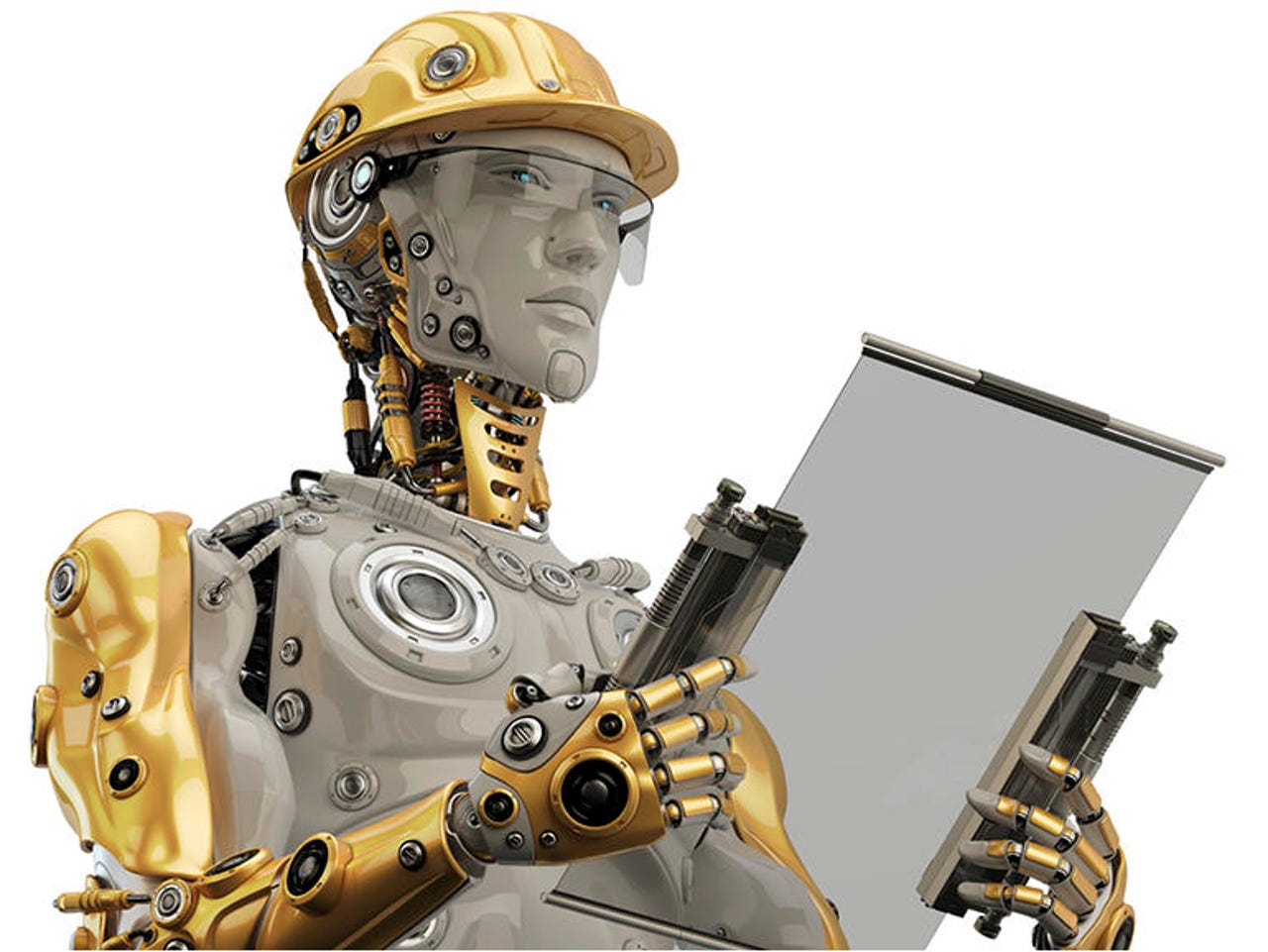Latest IT staffers: Software robots for data entry and process tasks


Image: iStock
The next member of your company's IT team might be a robot. Not the kind you'd typically see working on a factory assembly line, but a software tool that performs multiple digital tasks in an automated way.
The market for robotic process automation (RPA), in which a software "robot" replicates the actions of humans such as entering data into an enterprise resource planning (ERP) platform, is slowly emerging as organizations look for ways to improve efficiencies and cut costs.
Companies can configure RPA software to capture and interpret the actions of their existing applications used in a variety business processes. Once the software has been "trained" to grasp certain processes, it can automatically manipulate data, communicate with other systems, and process transactions as needed.
The software includes components such as digital image recognition tools for capturing data, and rules engines like the ones used in business process management tools.
Any company that relies on labor on a large scale for general knowledge process work, in which people perform high-volume, highly transactional functions, can potentially benefit from RPA, according to the Institute for Robotic Process Automation (IRPA).
Just as industrial robots are revamping the manufacturing sector by boosting production rates and improving quality, RPA will change the way organizations think about and administer business processes, IT supports, workflow, remote infrastructure, and back-office work, the institute says.
Many IT executives face challenges today that RPA addresses, says Frank Casale, founder and chairman emeritus of IRPA. These include not having enough skilled people, lack of sufficient budget, and constant pressure to deliver better services faster and at lower cost.
RPA "enables IT to get things done with less people," Casale says. "That savings can be floated to the bottom line of the company or IT can repurpose that to fund strategic projects they wouldn't get additional budget for. We are seeing this happen today."
While the idea of software robots replacing people in tech jobs is worrisome to many, proponents such as Casale say the technology enhances the nature of work by sparing people from dull, repetitive tasks that can be handled by robots.
"The average IT professional spends 80 percent of his time keeping the lights on and 20 percent [focusing] on critical work," Casale says. "That's bad for both the organization and the IT pro; that's not what they signed up for. With intelligent automation, cognitive computing, and RPA the bulk of the mundane work gets done by software -- freeing team members to focus on innovation."
Among the leading RPA vendors are Arago, Automation Anywhere, Blue Prism, UIPath, and WorkFusion, and new offerings continue to appear as the concept catches on with more organizations.
For example, in June professional services firm Accenture and RPA platform provider Automation Anywhere announced they were collaborating to deliver "enterprise-grade" RPA products.
As part of the collaboration, Automation Anywhere named Accenture a key implementation provider for its cloud-based RPA offering. Accenture will integrate Automation Anywhere's BotFarm into its business process services.
While much of the enterprise market remains somewhat unfamiliar with the technology, that might be changing. Blue Prism, in reporting its interim results in mid-July, said there was "noteworthy" customer adoption of its RPA platform in the first half of the year.
The company added 33 new enterprise clients and closed 64 licensing deals. Total customers now include 90 predominantly blue-chip companies across the United States, United Kingdom, Europe, and South Africa.